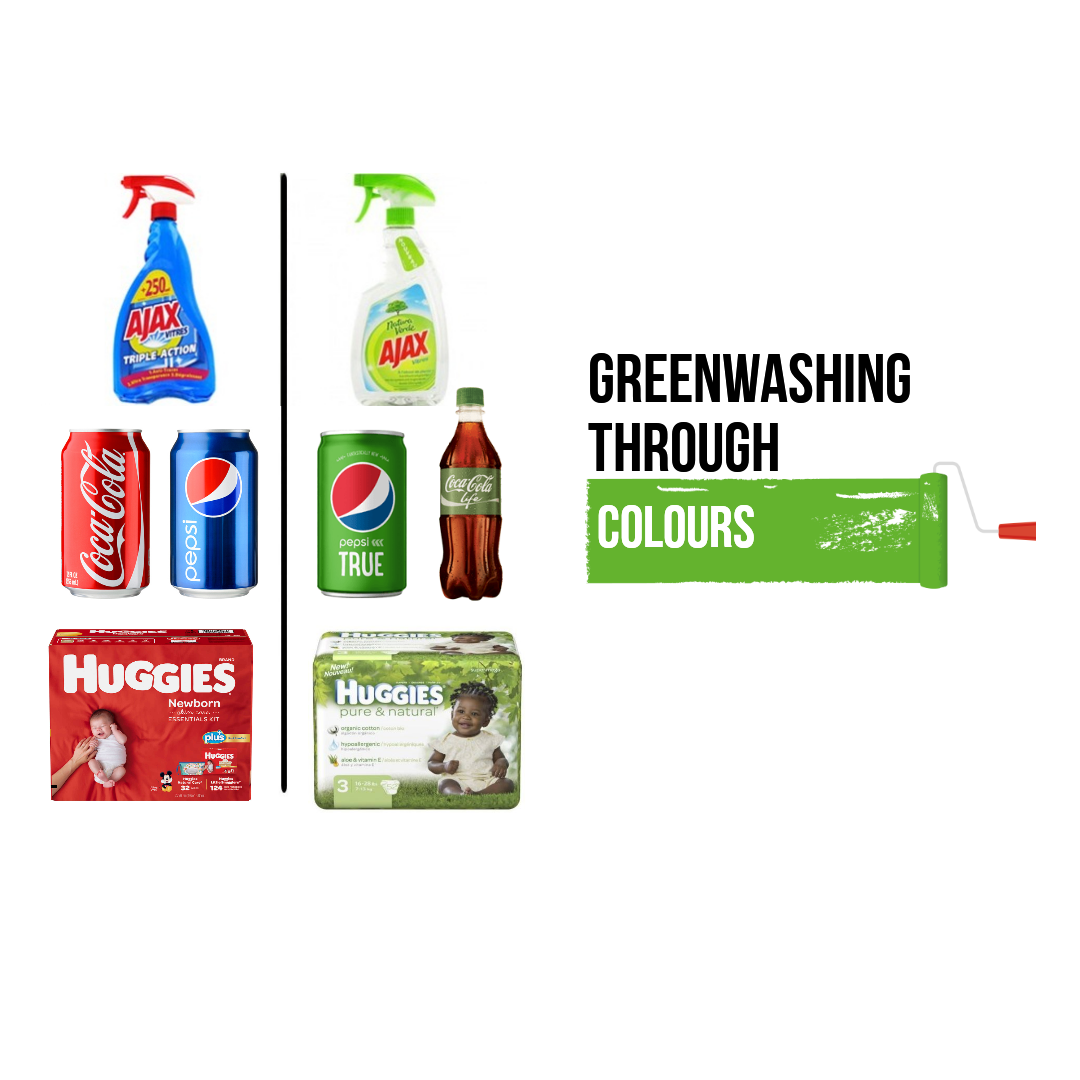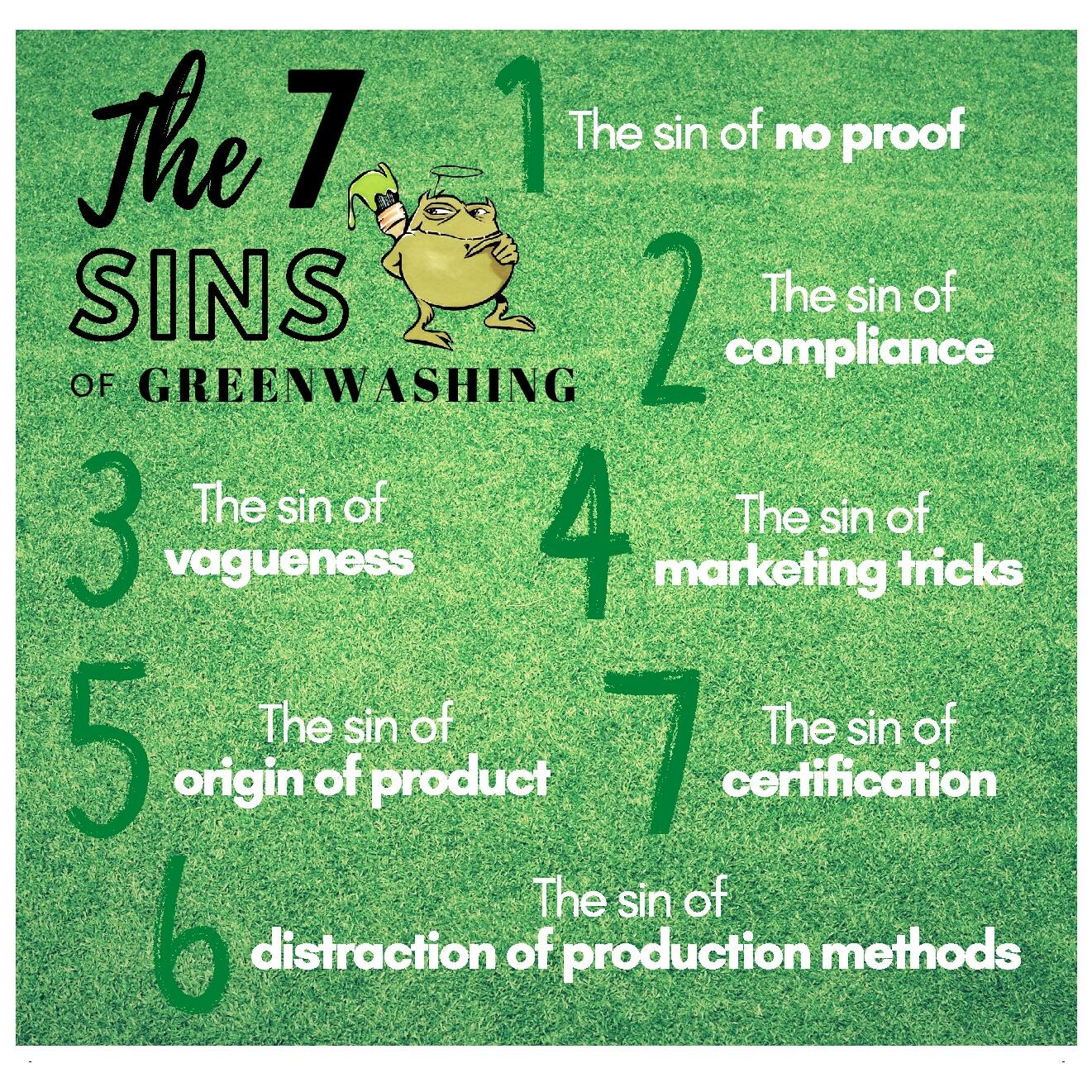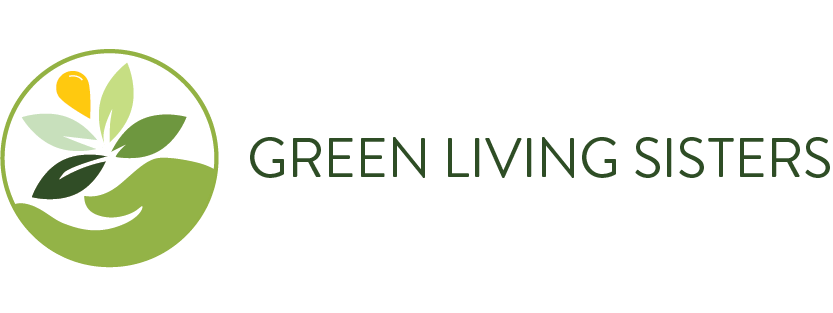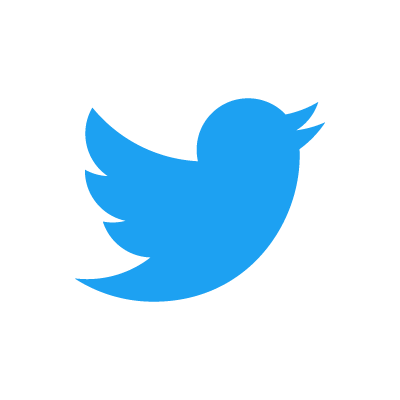

OFFICIAL DEFINITION:
Disinformation disseminated by an organization so as to present an environmentally responsible public image.
Disinformation disseminated by an organization so as to present an environmentally responsible public image.
LAYMAN'S TERMS
Greenwashing is when companies mislead consumers by claiming that their products are safe, non-toxic, eco-friendly, and natural when in reality they are NOT.
Greenwashing is when companies mislead consumers by claiming that their products are safe, non-toxic, eco-friendly, and natural when in reality they are NOT.
 PHOTO CRED: GREEN LIFESTYLE COMMUNITY
PHOTO CRED: GREEN LIFESTYLE COMMUNITYCOMMON LANGUAGE USED WHEN GREENWASHING
If you see some of these terms on the front label of a product, it is the perfect time to flip that bottle over and read those ingredients! A lot of these terms are unregulated and can be used by anybody with no real meaning:
If you see some of these terms on the front label of a product, it is the perfect time to flip that bottle over and read those ingredients! A lot of these terms are unregulated and can be used by anybody with no real meaning:
Sensitive | Earth-friendly | Organic | Green |
Botanical | Chemical-free | Dermatologist Recommended | Gentle |
Extracts | Natural | Mineral rich | Herbal |
Sensitive | Oil-free | Naturally fragranced | Plant-derived |
Pure | Raw | Sulfate-free | Natural essence |
Another term to be concept to be aware of is BRANDWASHING.
People can fall prey to greenwashing when they see a brand that has marketed itself well as a clean ingredient company. Maybe that brand has a product or two that are truly clean, but then offer other products that are filled with harmful toxins.
It's easy to assume all products from this brand are green when that is far from the truth.
SEVEN STEPS TO AVOIDING GREENWASHED PRODUCTS
Courtesy of momscleanairforce.org
1. Start With the Ingredient Label.
If no ingredients are listed anywhere on the package, that’s your first sign of deception. Every single product should share its ingredients. Only companies who have something to hide will keep ingredients secret. They may hide behind “trade-secret laws” (yes, I’m talking to you, fragrance and household cleaners), but the truth is that if they won’t share what’s in the formulation, then you should think twice before purchasing the product. You have a right to know what’s inside, and you should to be able to access that information right at the point of purchase.
And while we’re looking at formulations, glance at how long the ingredient list is and whether or not you understand everything on it. Laundry lists of chemical names, trademark signs, or alpha-numeric ingredients means there’s a good chance the product contains synthetic ingredients and chemicals that have gone through extensive processing. Better to put that one back and opt for something simpler and more natural.
2. Read Between the Lines: Understanding Terminology.
There are a few terms that are commonly mistaken as legitimate claims for better products but are actually only marketing terms. Words like “green”, “eco” and “clean” actually aren’t regulated the way “organic” is, for example, and each needs a further review. Start with the tips listed above in cross-checking these claims with the actual ingredients.
You can also take a look at the company and see if they have a banned substances list on their website. How robust is it? What else do they do around being green or sustainable? What’s their packaging like? Do they participate in 1% for the Planet or another give-back program? These details can tell you a lot about who a company is, and whether or not to trust their marketing claims.
Be wary of “plant-based” claims. It can mean that the ingredients once came from plants, but were brought to a lab where they were put through highly chemically intense processes, and may now even contain genetic engineering or synthetic biology. Just because something is plant-derived doesn’t make it natural.
3. Steer Clear of Anything That Stinks!
Avoid the terms “fragrance”, “scent” or “parfum/perfume”, which are actually just umbrella terms for what can be hundreds of undisclosed ingredients that make up a single fragrance. What’s worse, many of those secret ingredients have nothing to do with fragrance, but can include harsh chemicals, preservatives and other ingredients that serve to fill the product.
4. Don’t Be Duped by Single-Chemical Claims.
When you see single ingredient claims—think “BPA-Free”, “Phthalate-Free”, “PFOA-Free”, etc. – it’s worth probing a little further. That single claim doesn’t tell you much, given that it’s only one out of over 85,000 potential ingredients in use in consumer products. Turn over the package and read the rest of the ingredient list. You may find that one hormone-disrupting chemical like, BPA, or bisphenol-A, may have been swapped for BPS, or bisphenol-S, a similar chemical thought to be even more harmful to children’s health. Researchers call this a “regrettable substitution” – when one chemical is banned, only to be replaced with another chemical just as harmful, or potentially worse.
5. Look for Independent Third-Party Certifications Instead.
This means that an organization or some other body, independent of the company, has assessed the product. You may be familiar with big ones like USDA Organic or the Non-GMO Project. But there are many more specific ones, like MADE SAFE for nontoxic products, or Fair Trade for worker protections, or OEKO-TEX for fabrics.
Be wary of companies that make their own certification, like emblems, that don’t have any true meaning behind them. It’s the accountability in a third-party certification that helps ensure the brand is doing what it claims to do. You want to trust those legitimate certifications that have real programs and scientific method and/or rigorous programs behind them.
6. What is the Price Point and Can it Tell You Anything?
Unfortunately, it’s often an unavoidable truth that better ingredients tend to cost more, which means the product can sometimes be more expensive. So if a product claims to be made with only good ingredients and yet is ultra-cheap, look a little deeper. Sometimes, these products have taken short-cuts or are filled with inexpensive synthetic ingredients that don’t always serve a purpose in the end product. Instead, we suggest buying better products from companies you trust and/or are certified, even if the cost is higher.
You can offset cost by using fewer products. We often don’t need half the products we have, although we’ve been marketed to so that we think we need them. It’s worth evaluating what’s in your cabinet, and seeing what you really need and what you might be able to stop spending money on.
7. Get to Know the Companies You Buy From.
Check them out. How do they treat their employees? Where do they source ingredients, and are they transparent about it? Do they have a their banned substance list? Who do they support with their work? Do they do more than just sell? All of these things can tell you a lot about what a company stands for and who makes the decisions about how to interact in the world, and whether they’re one you want to support with your dollars.
I know it’s hard to know which products are safer. That’s largely thanks to a lack of viable legislation in this country to regulate what goes into the products we use in our homes and on our bodies, and what labels can legally claim. Until the laws are comprehensive and enforced, we need independent, uninfluenced third parties who can help consumers navigate the free-wheeling world of claims. And in the meantime, you can implement these seven easy strategies to avoid being greenwashed!
Courtesy of momscleanairforce.org
1. Start With the Ingredient Label.
If no ingredients are listed anywhere on the package, that’s your first sign of deception. Every single product should share its ingredients. Only companies who have something to hide will keep ingredients secret. They may hide behind “trade-secret laws” (yes, I’m talking to you, fragrance and household cleaners), but the truth is that if they won’t share what’s in the formulation, then you should think twice before purchasing the product. You have a right to know what’s inside, and you should to be able to access that information right at the point of purchase.
And while we’re looking at formulations, glance at how long the ingredient list is and whether or not you understand everything on it. Laundry lists of chemical names, trademark signs, or alpha-numeric ingredients means there’s a good chance the product contains synthetic ingredients and chemicals that have gone through extensive processing. Better to put that one back and opt for something simpler and more natural.
2. Read Between the Lines: Understanding Terminology.
There are a few terms that are commonly mistaken as legitimate claims for better products but are actually only marketing terms. Words like “green”, “eco” and “clean” actually aren’t regulated the way “organic” is, for example, and each needs a further review. Start with the tips listed above in cross-checking these claims with the actual ingredients.
You can also take a look at the company and see if they have a banned substances list on their website. How robust is it? What else do they do around being green or sustainable? What’s their packaging like? Do they participate in 1% for the Planet or another give-back program? These details can tell you a lot about who a company is, and whether or not to trust their marketing claims.
Be wary of “plant-based” claims. It can mean that the ingredients once came from plants, but were brought to a lab where they were put through highly chemically intense processes, and may now even contain genetic engineering or synthetic biology. Just because something is plant-derived doesn’t make it natural.
3. Steer Clear of Anything That Stinks!
Avoid the terms “fragrance”, “scent” or “parfum/perfume”, which are actually just umbrella terms for what can be hundreds of undisclosed ingredients that make up a single fragrance. What’s worse, many of those secret ingredients have nothing to do with fragrance, but can include harsh chemicals, preservatives and other ingredients that serve to fill the product.
4. Don’t Be Duped by Single-Chemical Claims.
When you see single ingredient claims—think “BPA-Free”, “Phthalate-Free”, “PFOA-Free”, etc. – it’s worth probing a little further. That single claim doesn’t tell you much, given that it’s only one out of over 85,000 potential ingredients in use in consumer products. Turn over the package and read the rest of the ingredient list. You may find that one hormone-disrupting chemical like, BPA, or bisphenol-A, may have been swapped for BPS, or bisphenol-S, a similar chemical thought to be even more harmful to children’s health. Researchers call this a “regrettable substitution” – when one chemical is banned, only to be replaced with another chemical just as harmful, or potentially worse.
5. Look for Independent Third-Party Certifications Instead.
This means that an organization or some other body, independent of the company, has assessed the product. You may be familiar with big ones like USDA Organic or the Non-GMO Project. But there are many more specific ones, like MADE SAFE for nontoxic products, or Fair Trade for worker protections, or OEKO-TEX for fabrics.
Be wary of companies that make their own certification, like emblems, that don’t have any true meaning behind them. It’s the accountability in a third-party certification that helps ensure the brand is doing what it claims to do. You want to trust those legitimate certifications that have real programs and scientific method and/or rigorous programs behind them.
6. What is the Price Point and Can it Tell You Anything?
Unfortunately, it’s often an unavoidable truth that better ingredients tend to cost more, which means the product can sometimes be more expensive. So if a product claims to be made with only good ingredients and yet is ultra-cheap, look a little deeper. Sometimes, these products have taken short-cuts or are filled with inexpensive synthetic ingredients that don’t always serve a purpose in the end product. Instead, we suggest buying better products from companies you trust and/or are certified, even if the cost is higher.
You can offset cost by using fewer products. We often don’t need half the products we have, although we’ve been marketed to so that we think we need them. It’s worth evaluating what’s in your cabinet, and seeing what you really need and what you might be able to stop spending money on.
7. Get to Know the Companies You Buy From.
Check them out. How do they treat their employees? Where do they source ingredients, and are they transparent about it? Do they have a their banned substance list? Who do they support with their work? Do they do more than just sell? All of these things can tell you a lot about what a company stands for and who makes the decisions about how to interact in the world, and whether they’re one you want to support with your dollars.
I know it’s hard to know which products are safer. That’s largely thanks to a lack of viable legislation in this country to regulate what goes into the products we use in our homes and on our bodies, and what labels can legally claim. Until the laws are comprehensive and enforced, we need independent, uninfluenced third parties who can help consumers navigate the free-wheeling world of claims. And in the meantime, you can implement these seven easy strategies to avoid being greenwashed!
We help people live as close to nature as possible
with sustainable, toxic-free and organic products.
Natural Living made simple






